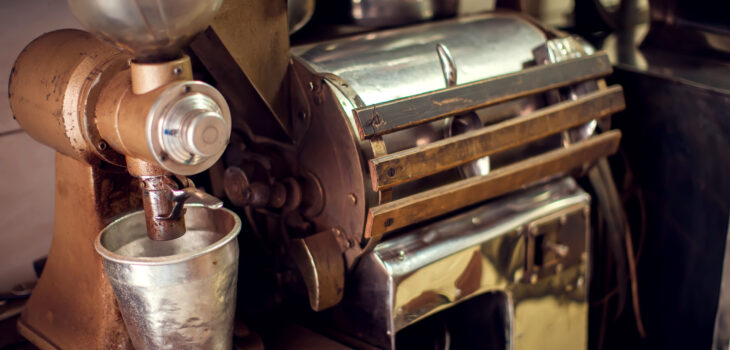 coffee knowledge
coffee knowledge
The history of espresso
The first espresso patent goes back to Angelo Moriondo and dates from 1884.
For a long time, he was confronted with the fact that it took far too long to brew coffee. In order to brew faster, the coffee had to be ground finer. However, this makes it more difficult for the hot water to penetrate the coffee.
That’s why Moriondo made use of something that is still an essential part of a portafilter today: steam pressure. However, he never used the patent commercially. Based on this, Luigi Bezzera developed the whole thing further and applied for his patent in 1903. He was able to build a few machines. Nevertheless, he did not have the money to turn it into a business. Desiderio Pavoni, on the other hand, had the necessary financial means and bought the patent in the same year to develop it further. This is how the collaboration between Bezzera and Pavoni came about.
They presented their achievement to the world at the international trade fair in Milan in 1906. They called the drink “Café Espresso”. However, this did not yet mean the hot drink we know today. It was basically a cup of coffee that contained something more than a classic espresso. The name reflects exactly what happens to the coffee during the brewing process:
ESPRESSO – [esˈprɛsso] ESPRIMERE – [eˈspriːmere]
- with high speed
- to express something
In the 1930s, Achilles Gaggia set out in search of the perfect espresso. Legend has it that he was inspired to create his first lever machine by the piston engine of a US military jeep.
In 1948, the first espresso machine with a lever was born. The barista could now manually determine the right brewing pressure and brew the coffee in 25 to 30 seconds. This gave espresso its own category and made it the short hot drink we know and love today. With this development, it was now possible for the barista to brew an espresso in 25-30 seconds.
In 1961, Ernesto Valente developed the first Faema E61 with an electric pressure pump. This system allowed for much smoother extractions and thus soon replaced many of the lever machines.







